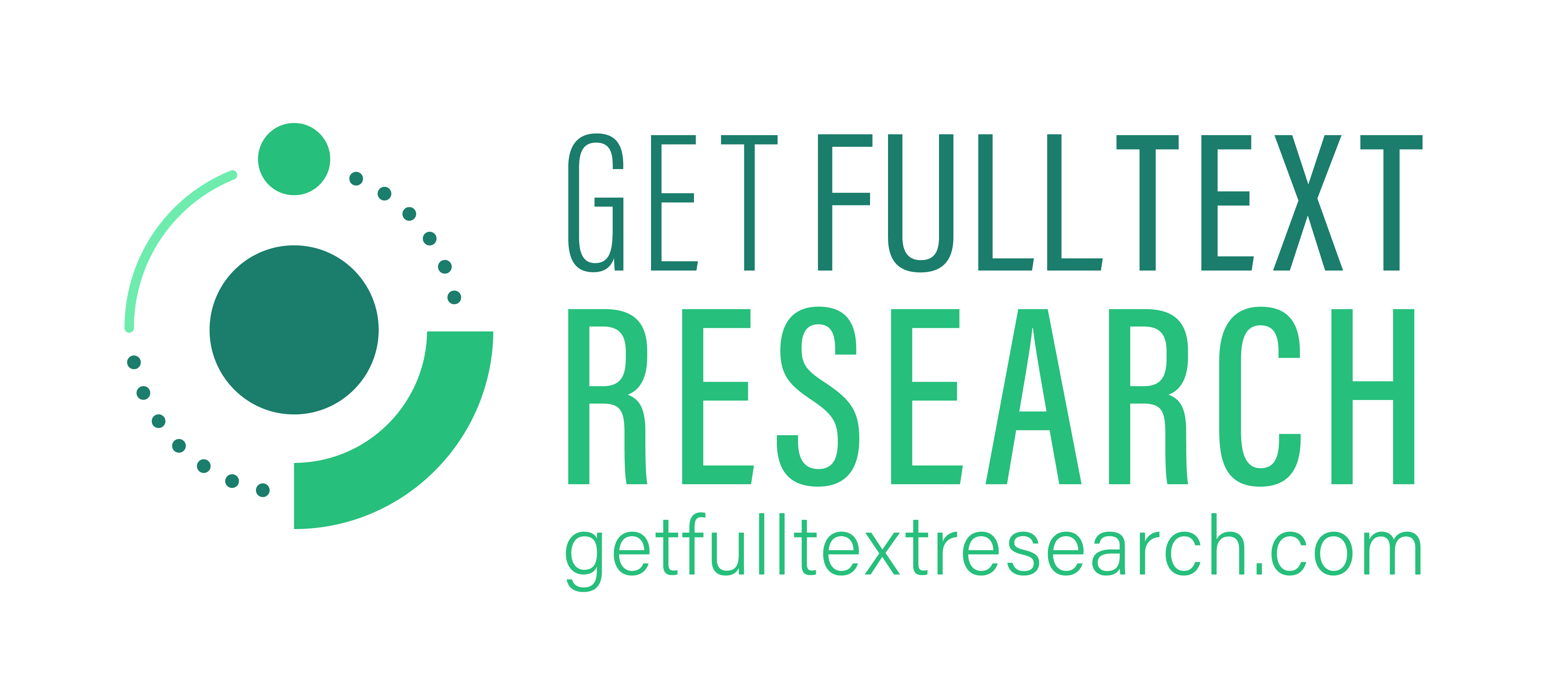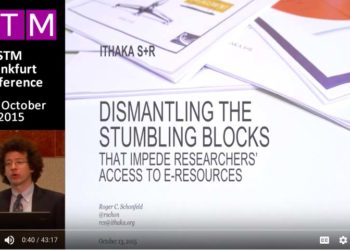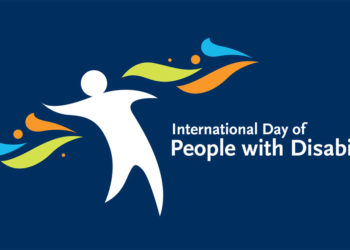Today, a group of the largest scholarly publishers is announcing a new effort to improve discovery and access, fight piracy, compete with ResearchGate, and position their platforms for an open access ecosystem. Their new “Get Full Text Research” (GetFTR) service will meaningfully improve access for the vast majority of users who discover articles from starting points other than the publisher website. This important development in user experience more importantly provides further evidence that publishers are finally beginning to address digital strategy in an environment of growing leakage that has steadily eroded their ability to monetize the value they create. At the same time, it probably does not yet go far enough to reset the competitive environment.
I was able to speak recently with Todd Toler (Vice President of Product Strategy & Partnerships for Wiley) and Ralph Youngen (Senior Director, Technology Strategy & Partnerships for the American Chemical Society – ACS) about this initiative and some of its implications. The analysis presented here is my own.
What Is “GetFTR”?
Publishers have been working on improved discovery and access for several years now. The effort to create RA21 (now SeamlessAccess.org) is helping to overcome one major access stumbling block by making the authorization process smoother. GetFTR, a service that signals to the user whether they will have access to the full-text and then routes them directly to it, is a natural next step.
Backed by the American Chemical Society, Elsevier, Springer Nature, Taylor & Francis, and Wiley, GetFTR has two components. First, it enables the discovery service to indicate whether the article full text is available to the user before clicking on a link to the publisher page and if so to link directly to it. It requires that a user has disclosed their institutional affiliation through the SeamlessAccess.Org “Where Are You From” service, which in turn stores the affiliation information locally on their browser. The user’s institutional affiliation is sent along with the article DOI to a service which then queries the appropriate publisher to determine whether the individual should be entitled to access the article. This should take place seamlessly in the background as a list of search results is loading. The user will see, in a list of search results, clear information such as a green or red button, on whether they will be able to access the full text of each article prior to clicking on the link to it. A user who then clicks on the link will be taken to their institutional login or directly to the article without any intermediate pages if they are already logged in during the current session. This is a natural next step to improve access by leveraging federated authentication that is being rolled out more broadly in the wake of RA21. If enough subscribing institutions adopt federated authentication and the GetFTR technical implementation is successful it will measurably improve user experience in many cases.
In a way, however, the second aspect of GetFTR is more significant, because it recognizes that, in the workflow described above, many users are not entitled to access the licensed version. Naturally, a user with entitlements through a subscription will be routed to the version of record. But the service will also provide an alternative for others who do not have licensed access, an alternative that each publisher will be able to determine for itself. Some publishers might choose to provide access to a preprint or a read-only version, perhaps in some cases on some kind of metered basis. I expect publishers will typically enable some alternative version for their content, in which case the vast majority of scholarly content will be freely available through publishers even if it is not open access in terms of licensing. This alternative pathway is a modest technical development but will have far-reaching strategic implications.
GetFTR is intended to be entirely invisible to the user other than an array of colored buttons indicating that the link will take them to the version of record, an alternative pathway, or (presumably in rare cases) no access at all. Thus, like RA21, the brand name is not intended to face towards users. Digital Science and Elsevier expect to pilot GetFTR in the first quarter of 2020 through their platforms Dimensions, Mendeley, and ReadCube Papers. GetFTR characterizes these kinds of discovery and scholarly collaboration platforms as “integration partners.” Technical details about the service and associated APIs for publishers and integration partners are available online.
The pilot implementation will have several key limitations. First, it assesses content availability only at an institutional subscription level, making no allowance for departmental level licenses or multiple subscriptions from a single institution. Second, it does not allow a single user to assert multiple institutional affiliations, such as their alma mater and local public library along with their current employer. Third, it is not clear how individual access models (such as subscriptions and article purchases) will be integrated. Finally, it seems not to have awareness of other licensed sources for identical content, such as aggregators. Some of these limitations may be addressed during the course of the pilot period.
Why This? Why Now?
The basic backdrop for this initiative is the belated recognition by scholarly publishers of the substantial implications of a poor user experience. In 2015, I called attention to the tremendous inadequacies in the user’s ability to access licensed content — what I have termed stumbling blocks that impede legitimate user access to licensed content. As a result of these stumbling users are drawn towards alternative sources for the content. And these alternative sources — which represent leakage from the publishers’ platforms — are growing substantially.
For publishers, this situation is increasingly untenable. Pirate sites include nearly 100% of licensed publisher content. In addition, various kinds of repositories make green versions available and scholarly collaboration networks provide access to tremendous amounts of content as well. But it is not just availability elsewhere that is a concern. The use of SciHub, ResearchGate, and other alternative sources of access has exploded. With usage growing rapidly through these alternatives, the share of usage taking place on the publisher site is declining. Put another way, a declining share of the value that publishers create is captured through channels that they have been able to monetize. The result is that the value of the licensed content bundle is under growing pressure.
It was comparatively easy for publishers to recognize these challenges. The major publishers have agreed for some time about the need for collective action to reduce the stumbling blocks across multiple systems to bring users far more seamlessly towards article full text. It has proven more difficult for them to pursue the collective action necessary to address them.
Their first major direction was to address authentication and authorization through the RA21 initiative. Publishers have been hinting at subsequent developments to build on RA21 for some time. By last October, one publisher executive would refer to RA21 without a solution to entitlements as a “disembodied spirit.” And, in public statements, it was clear that both Wiley and Springer Nature were committed to some kind of “shared” or “joint” entitlements system. Today’s GetFTR announcement represents the next step in the journey towards reducing the stumbling blocks between discovery and access and plugging some of the leaks publishers are experiencing.
How Are Publishers Collaborating?
For four or five years now, the major houses have recognized that enabling and managing usage of their content ultimately relies on their ability to influence the parts of the discovery to access workflow that take place not on their own sites but rather elsewhere. As the urgency of re-enclosing value within publisher sales channels has grown, several major publishers seem to have concluded that they cannot rely on industry bodies to undertake this work for them. The work itself is business critical and requires a new type of publishing leader who is equally comfortable with business strategy and technical architecture. It also requires that these leaders be empowered to work collaboratively across a group of fiercely competitive companies with divergent strategic directions.
The five major publishing houses that are the driving forces behind GetFTR are not pursuing this initiative through one of the major industry collaborative bodies. All five are leading members of the STM Association, NISO, ORCID, Crossref, and CHORUS, to name several major industry groups. But rather than working through one of these existing groups, the houses plan instead to launch a new legal entity.
While Toler and Youngen were too politic to go deeply into the details of why this might be, it is clear that the leadership of the large houses have felt a major sense of mismatch between their business priorities on the one hand and the capabilities of these existing industry bodies. At recent industry events, publishing house CEOs have voiced extensive concerns about the lack of cooperation-driven innovation in the sector. For example, Judy Verses from Wiley spoke to this issue in spring 2018, and several executives did so at Frankfurt this fall. In both cases, long standing members of the scholarly publishing sector questioned if these executives perhaps did not realize the extensive collaborations driven through Crossref and ORCID, among others. It is now clear to me that the issue is not a lack of knowledge but rather a concern at the executive level about the perceived inability of existing collaborative vehicles to enable the new strategic directions that publishers feel they must pursue.
Of course it is at least partially the case that initiating innovative strategic collaboration among competitors has to be led by the competitors themselves. In the case of GetFTR, there are nuanced issues around which publishers can participate and which integration partners to avoid; for example, if SciHub or another pirate attempted to join. The possible place of ResearchGate especially requires direct engagement from Elsevier, Springer Nature, and others.
But it is also the case that several of the existing industry collaborative vehicles are in various kinds of transition right now. Crossref played a substantial role in incubating Distributed Usage Logging, which would be a key component of a sector-wide syndication framework if one were to develop; but it is also at a turning point, facing governance and business model questions about whether it can “support community-driven efforts to improve discovery and navigation, and our ability to capture and assess contributions to science and scholarship” without losing the support of the large commercial publishers that fund a large portion of its expenses. The STM Association helped to originate RA 21 but is itself in a CEO transition, with Ian Moss taking the reins from longtime hand Michael Mabe [PDF], raising questions about how this important industry association may evolve.
Electing not to work through an existing industry collaboration, five major publishing houses are instead incubating GetFTR directly, with ACS serving as fiscal agent. Soon, the partners expect to create a new not for profit organization to manage the initiative, illustrating that the proliferation of collaborative not for profits is apparently becoming just as big a problem for scholarly publishers as it is for academic libraries. Over time, more publishers are expected to join the initiative, but it will not surprise me if the governance of the not for profit remains more closely held than, for example, Crossref with its thousands of voting members. Instead, during development, the partners drew in as advisors a number of individuals from society publishers, one entirely open access publisher, and several platform providers.
What Implications Can Be Foreseen?
Over time, if GetFTR is as widely implemented as the initial partners expect, it will have substantial implications not only on user experience but on digital strategy more broadly.
No aspect of GetFTR has more direct benefit to publishers than positioning them to serve in effect as their own access brokers, routing entitled users to versions of record and others through an alternative preferred pathway. This development may take some of the wind out of the sails of the access broker extensions such as Kopernio and Lean Library — which is clearly intentional given that RA21 derided these solutions as “workarounds.” And even before these broker services developed, the library community was active in efforts to solve the “appropriate copy” problem. With GetFTR instead empowering publishers to make access choices for users, we will see users routed differently than they otherwise would be. Publishers will naturally elect to route not only entitled users to their sites for subscription access but also all users to their sites for gold open access publications — a huge opportunity for them. And it seems likely that most will provide an alternative access option to those who do not have subscription access, seeing it as a chance to gather user data and explore an array of sales opportunities. All of this is directly about plugging leakage and re-enclosing value, showing the potential power of controlling a “master switch.”
GetFTR in some ways follows the logic of the Springer Nature syndication pilot with ResearchGate, including in its provision of an alternative pathway. But, ResearchGate is also in some ways the most obvious target of this move, given that it is seen by many publishers as a massive source of leakage. Undoubtedly, GetFTR will have implications for ResearchGate’s syndication pilot with Springer Nature and what will follow. Springer Nature’s Susie Winter tells me that the “ResearchGate collaboration is working well and is continuously evaluated.” Is ResearchGate’s enormous usage enough to drive additional publishers to syndicate content to it, in exchange for usage and data they could not otherwise generate on their own? Or will publishers insist on ResearchGate implementing GetFTR to drive usage back to their platforms?
Of course there will be implications for many others as well. As discovery services implement GetFTR and therefore link users directly to the publisher website, will aggregators lose so much usage that they will need to reposition their businesses? Will users be befuddled by signals that they don’t have access to content that it turns out they do – just not on the publisher site? Will Google Scholar’s unique advantage among discovery services in providing a seamless authorization and linking experience begin to erode? How will libraries respond to all of this? I look forward to tracking these and other implications as the pilot develops in the coming months.
What Comes Next?
The GetFTR partnership, in combination with the RA21 standard and service, will provide a fairly robust access workflow for those users starting in a standalone discovery service. While these services are imperfect, overall this is a big win for publishers. But it has been a journey of four years to provide the infrastructure needed to manage the use cases for off-platform discovery that first began appearing a decade before that. So, we must also recognize that, as Karger CEO Daniel Ebneter said recently, “The challenge is to innovate at a pace superior to the ecosystem you are in.” And framed that way, it is increasingly clear to me that another dilemma faced by publishers in recapturing value is whether and if so how publishers will reformulate their offerings to center them as much around researchers’ identity as they do around journal titles. Recentering product offerings around researchers requires strategic engagement with what I am calling identity management, including the nature of the user account and associated social graph, and which some are coming to refer to as the “namespace.” Identity management is absolutely vital to enable research collaboration, assessment, and showcasing, along with product personalization and an array of adjacent opportunities.
This issue has been at the very heart of the strategic divergences among publishers that came into public view in their ResearchGate split. ACS and Elsevier, each invested in an array of workflow products and services that rely on their access to and control of identity management, have been hammering ResearchGate with everything in their legal arsenal. Springer Nature appears not to see controlling identity management as a core part of its strategy and has been willing to deepen its partnership with ResearchGate. It is my view that this divergent behavior can be explained by Elsevier’s efforts to defend its Mendeley and Scopus businesses, rather than an analysis of the best interests of its primary publishing businesses alone. The result of this differential marketplace positioning has been a strategic divergence that has made it possible for the scholarly publishing sector only to pursue incremental efforts to bolster the lost value from leakage. As Springer Nature’s then-CEO Daniel Ropers explained last year, this split was driven by a lack of clarity “on the end-game for entitlements.”
I have argued that RA21 did not go far enough, since identity is everything. It is clear to me that the end game is something closer to a supercontinent for discovery of and access to all publisher content with a single user account. ResearchGate has managed to create exactly this: a central hub for discovery and access with identity management (including a social graph) that enables increasingly deep collaboration.
ResearchGate is not alone in working to build academic/scientific identity management and an array of associated scholarly services, but, especially when these services have a social graph at their heart, they seem to have winner-take-all tendencies. Mendeley was another early entrant in the scholarly collaboration network space. When Elsevier announced an annotation partnership with hypothes.is two years ago, it was careful to enable it with Elsevier/Mendeley accounts rather than rely exclusively on a more open standard. But today, it is clear that even Elsevier may not develop the scale to compete with ResearchGate. Elsevier now sees Mendeley as part of what Gaby Appleton has called a “connected galaxy.”
RA21 and GetFTR represent real progress among publishers towards improving the user experience, plugging leakage, and positioning their platforms for an increasingly open access ecosystem. The question that begs to be asked today is whether there will be a cross-publisher collaboration to provide some kind of shared identity management, including a shared social graph. Looking at how different companies are positioned in the various lawsuits, I wonder if Elsevier and ACS, or perhaps some other group of publishers, will take the next step to compete with ResearchGate in developing an identity management system owned or controlled by the scholarly publishing sector and not just a single publisher?
Discussion
19 Thoughts on "Publishers Announce a Major New Service to Plug Leakage"
Thank you for this post, Roger. This is a very important industry development and I hope that librarians will read your description and analysis carefully and consider the many implications as well as what comes next – first RA21/CSA, now GetFTR, and then ???
I have a lot of questions about the user experience, user control over their own data/privacy, etc. but it seems the GetFTR demo is only available to interested publishers (reading the GetFTR website) so for now I’ll have to be patient on that until it is put into production on the three integration partners sites.
In the meantime, it already appears that the implications for how content on aggregator platforms is made invisible in the user workflow in GetFTR are significant (I am inferring that limitation isn’t going to be addressed since it would be counter to the publisher platform-centric nature of the GetFTR strategy). This is a user experience issue of course but also carves out value from those aggregators. Will libraries proactively move away from reliance on them for content? Or, will the marginalization be slower and over time? Not great news for aggregators of course in either case!
I also have to wonder if the “signals” (red/green/etc.) will have the opposite effect of what is intended. I can easily imagine a future interview with a student about their workflow and them saying “this is great – when I see the red marker I know I’m not going to get it here so I just immediately copy the number [DOI] and go to SciHub … saves me a lot of time!”
Thanks Roger, I haven’t had time this morning for a close read and what I did sent off all the alarms that once again I without an institutional affiliation may never make it through to the content. Not yet open enough?
I had a similar thought for patients and patient advocates who would like to access medical journal articles. Hoping the publishers will allow read only or preprints for articles behind a paywall in easily accessible and discoverable way for patients.
That’s one of the specific use cases that we contemplated in defining the mechanism for delivering easy access to an alternative version of articles. Publishers will have individual choice in whether and how they leverage this capability, but it’s something that we all collectively felt was an important capability to have available.
Still sounds more complicated than copying the DOI into sci-hub.
It will be interpreted by the net as damage and so the net will route around it.
Interesting to see that the “service” is presented as “plugging leakage” rather than as a service to users, scholars, researchers, teachers, citizens, etc… Ever since digitization emerged, publishers have been sticking to one perspective and one perspective only: how can we protect and enhance our strategic position within the scientific communication system(s) so as to protect or enhance our “sustainability” (aka profit making ability)? The point of scientific (and, more generally, scholarly) communication is knowledge creation and sharing, not business and its bottom line!
Thanks for this Roger. I wonder what makes you state: “I expect publishers will typically enable some alternative version for their content, in which case the vast majority of scholarly content will be freely available through publishers even if it is not open access in terms of licensing.” Is that based on the inteviews with Toler and Youngen or your own expectation? Do I understand it correctly that you expect GetFTR to almost always offer access to a version of the full text, even if one has limited licensed access?
That’s my own analysis, yes, that an alternative version will typically be made available by publishers. This is optional, though, and I believe it can vary based on publisher, journal, and perhaps other factors as well. My view is based in part on my assessment of the Springer Nature / ResearchGate pilot, including conversations with executives from several other publishers about what we might expect to see in the future. Note that I also wrote this elsewhere in the piece: “Some publishers might choose to provide access to a preprint or a read-only version, perhaps in some cases on some kind of metered basis.”
Many of the publishers involved here already offer free (although limited) access to all of their content through technologies like ReadCube, so to me this seems more like an expansion of what’s already being done, adding a discovery layer path to getting to that framed version rather than relying upon subscribers sending out toll free links.
That’s right David — it’s about putting that “toll free” version in a different and arguably much more common workflow.
“Many of the publishers involved here already offer free (although limited) access to all of their content through technologies like ReadCube”. Is that really the case? Is there any evidence to underpin that? If I am an independent scholar can I really read all content from Elsevier, ACS, Wiley, SpringerNature, Taylor & Francis?Seriously doubt that.
My understanding of the programs of publishers like Wiley and Springer Nature is that they use ReadCube to offer authors or anyone with access to any article, the ability to create a free link to that article that can be shared online and anywhere else, granting free access to a ReadCube version of the article. Details here and here:
https://www.readcube.com/content-sharing-at-springer-nature-goes-from-strength-to-strength/
https://www.readcube.com/wileyexpand/
As noted in my previous comment, I would think that GetFTR will expand upon these existing programs (rather than pointing readers to a preprint or something in a repository).
Thanks, still that surprises me, because also typically openly published preprints do not make up more than a few percent of published articles, and deposited accepted manuscripts not more than a few dozen percent. So this would imply that publishers would typically start supplying free – though read only and not open licensed – access to the bulk of the articles. Perhaps it would reduce the public demand for open access, and it would certainly give them a lot of user data, but they would risk losing (potential) customers. Some smaller, poorer and non academic customers might be content with having that limited access, larger institutions might choose to limit their licenses to just the most used journals instead of big deals.
Perhaps it would reduce the public demand for open access, and it would certainly give them a lot of user data, but they would risk losing (potential) customers. Some smaller, poorer and non academic customers might be content with having that limited access, larger institutions might choose to limit their licenses to just the most used journals instead of big deals.
Cooperation between these big 5 publishers [Sage is missing] is a worry given their profit motives. I wonder what new data they will obtain from this service?
The fact that it’s a group of big publishers who are (1) developing this and (2) cooperating with each other sends off big red flags for me. Also the connection to RA21, which is simply a move to have publishers and aggregator and platform vendors have control over and access to individual library patron use, suggests the same motivation.




